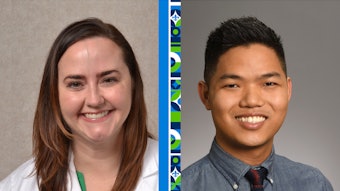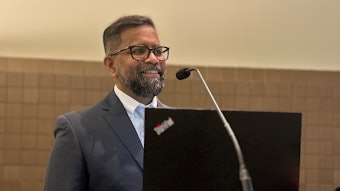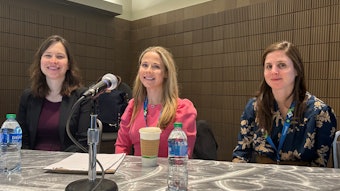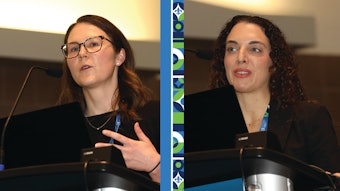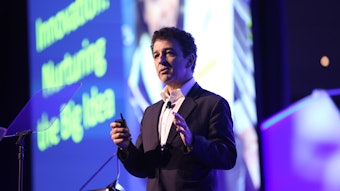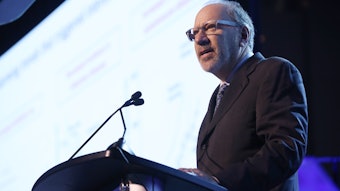Taking on cervical cancer, one shot at a time
HPV vaccines evolving, showing promise.
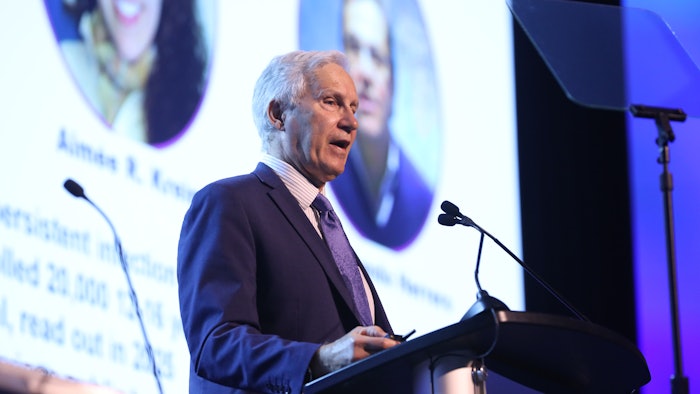
Human papilloma virus (HPV) was a scourge long before it was identified as the primary cause of cervical cancer in 1983. As recently as 2021, the World Health Organization (WHO) noted more than 600,000 cases of cervical cancer annually and more than 300,000 fatalities. Add oropharyngeal cancers, condylomas, and other conditions caused by HPV and the toll is far higher. Nearly all are avoidable by HPV vaccination.
John T. Schiller, PhD, distinguished investigator at the National Institutes of Health Laboratory of Cellular Oncology in Bethesda, Maryland, described “The Road to Single Dose HPV Vaccines” during “P151 – Plenary” Lila and Murray Gruber Memorial Cancer Research Award Lectureship.
Just a shot away?
“There is increasing evidence that even if you only give one dose, you can have basically complete protection against infection by the HPV types targeted by the vaccines,” said Dr. Schiller, who is a driving force behind the current HPV vaccines. “A landmark decision from WHO this last summer said you can administer either one or the two doses. The single-dose efficacy exceeds the expectations that any of us had developing this vaccine. We’ve provided biological plausibility as to why this vaccine is different from every other subunit vaccine developed to date. It is just amazing at inducing antibody responses, and the unique HPV infection process makes the virus exceptionally susceptible to inhibition by the vaccine-induce antibodies.”
Burden of cervical cancer heavy in low resource settings
Dr. Schiller discussed the prevalence of cervical cancer in areas of the world where vaccines and other resources are not as readily available. In Sub Saharan Africa, for example, cervical cancer is one of leading causes of cancer deaths in women. Because cervical cancer tends to occur at a relatively younger age, in the 40s and 50s, it affects women during their prime child-rearing and working years.
HPV vaccine uptake has been low in these same low-resource areas, he continued, largely due to cost of the vaccines and adolescent vaccination programs. The growing realization that a single dose can provide effective, likely lifetime, protection against HPV infection and HPV-caused morbidity and mortality could impact cancer control for the entire globe.
Like so many game-changing scientific discoveries, the HPV vaccine was the result of high-risk/high-reward research.
Eight genes and virus-like particles
“I started as a postdoc in Douglas Lowy’s lab at the NIH studying viruses that cause cancer,” Dr. Schiller said. “We didn’t have the ability back then to interrogate the human genome, we couldn’t even sequence the genome. But oncogenic HPVs have just eight genes and they somehow change cells to look like cancer cells. We hoped that by studying those eight genes, we could get some idea of important pathways for making a normal cell into a cancer cell. We were just exploiting tools to help us understand carcinogenesis.”
Since their initial discovery in 1983, researchers had spent more than a decade trying to produce vaccines against oncogene HPV types, but they all used denatured monomeric virion proteins or peptides and were getting nowhere. Drs. Schiller and Lowy took a different approach, creating virus-like particles (VLPs) of the major virion protein that self-assemble into what resembles the outer shell of HPV.
“Making VLPs turned out to be the key to getting the right conformation to induce antibodies that recognize the authentic virus,” Dr. Schiller said. “Subsequently, we found out that this highly repetitive structure is key to making these extremely high levels of antibodies that last indefinitely. Based on the success of the HPV VLPs, a number of academic labs and companies have been working on what we call a virus-like display, a high-density, repetitive array of targets for antibodies, for SARS, HIV, malaria. The HPV vaccine has become the paradigm of what a subunit vaccine can do in terms of inducing life-saving, long-lasting antibody responses.”
Stunning scientific results
The results of HPV vaccination stunned the world, Dr. Schiller said. The incidence of genital warts, caused by HPV, plummeted in the years following the introduction of HPV vaccination, as did precancerous alterations in cervical tissue. Cervical cancer rates are now beginning to sink in vaccinated populations. Recent data from Denmark, Sweden, the United Kingdom, and other countries with high HPV vaccination rates show a 90% drop in the incidence of cervical cancers in women vaccinated before they became sexually active.
“It has been fascinating to be involved in this from the beginning,” Dr. Schiller said. “We started working on how HPV causes cancer as a basic science question. We weren’t thinking at all about vaccines, the public health impact of reducing the burden of cervical cancer and other HPV-caused diseases or interventions in low-resource settings. We have vaccines that work very well, even with just one dose. By all measures, this is a great intervention. Uptake is now the key to public health impact.”
Visit AAD DermWorld Meeting News Central for more articles.



